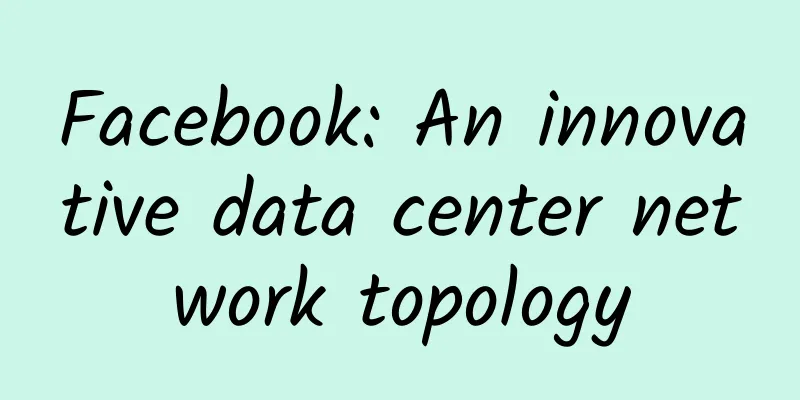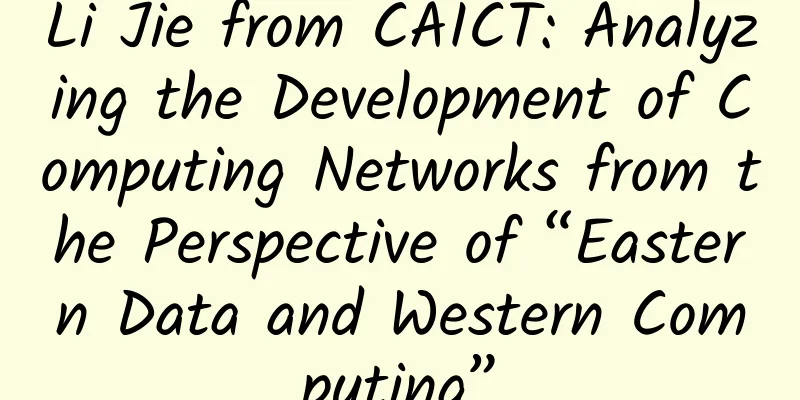Facebook: An innovative data center network topology

|
Aerial view of Facebook's data center in Altoona, Iowa Facebook's data centers receive billions of user requests every day; as the company continues to add members and launch new features, the number of requests continues to increase. All of this is basically good for Facebook, but it is a challenge for Facebook's network staff. For example, the data center topology that was able to meet the requirements five months ago is now overwhelmed. So in addition to building large data centers, like this one in Altoona, Iowa, Facebook engineers are constantly optimizing the network design of data centers. That said, tweaking and changing the ideas that engineers came up with and implemented in the Altoona data center might not be the right word to describe it. It's more like they rewrote the network design guidelines. The old Facebook network Before the Altoona data center was built, Facebook engineers arranged the server racks in the data center into clusters similar to the architecture shown in Figure A. In a real environment, Facebook would have hundreds of racks instead of just three. The figure also shows the top-of-rack (TOR) switches for each rack, which act as intermediaries between the servers and the upstream aggregation switches. Figure A: Top of Rack (TOR) - Network Connection Architecture This architecture worked well, but it presented several challenges for Facebook engineers. "First, the size of the cluster was limited by the port density of the cluster switches," explains Alexey Andreyev, a network engineer at Facebook. "To build the largest clusters, we needed the largest network equipment, which was available from a limited number of vendors. Also, needing so many ports in a device was inconsistent with the desire to provide the highest bandwidth infrastructure. Even more difficult was finding the optimal long-term balance between cluster size, rack bandwidth, and bandwidth outside the cluster." Fabric: A new network topology Seeing those billions of requests per day as an incentive, engineers decided to move away from the complex, bandwidth-hungry top-down network hierarchy in favor of a new design called Fabric. The slide in Figure B depicts the new cluster of server racks, called pods. A single pod includes 48 racks and top-of-rack switches that are interconnected into four fabric switches. "Each top-of-rack switch currently has four 40G uplinks, providing a total of 160G of bandwidth capacity to the server racks connected with 10G." Figure B This design approach has the following advantages: • Easy to deploy pods with 48 nodes • Scalability is simplified and unlimited • Each pod is identical and uses the same connection The next step is to connect all the fabric switches -- the slide in Figure C describes how this task is accomplished. Andreyev says this is relatively simple (it's hard to imagine how it used to be). Figure C Andreyev explained that Facebook engineers adhered to this 48-node rule when adding spine switches. "To implement connectivity across the entire building, we created four separate 'planes' of spine switches, each of which can scale to up to 48 independent devices. Each fabric switch in each pod is connected to each spine switch in the local plane." The numbers Andreyev mentioned next are staggeringly large. "Together, the pods and planes form a modular network topology capable of accommodating hundreds of thousands of servers connected with 10G, scaling to multiple petabits of bisection bandwidth, and providing non-oversubscribed rack-to-rack performance for our data center buildings." Network Operations From the top-of-rack switches to the edge of the network, the Fabric network design uses unified "Layer 3" technology, supports IPv4 and IPv6, and uses equal cost multi-path (ECMP) routing. Andreyev added: "To prevent occasional 'elephant traffic' from occupying a large amount of bandwidth and causing end-to-end path performance degradation, we make the network have multiple speeds-all 40G links between switches, while connecting servers through 10G ports on the top-of-rack switches. We also have server-side mechanisms so that in the event of a problem, we can bypass the fault." Physical layout Andreyev wrote that the new building layout shown in Figure D is not much different from Facebook's previous design. One difference is that the new spine and edge switches of Fabric are placed on the first floor between Data Hall X and Data Hall Y, and the network connection to the outside world (minimum point of entry, or MPOE) spans the era of spine switches and edge switches. Figure D Overcoming challenges Facebook engineers appear to have overcome the challenges they faced. Hardware limitations are no longer an issue. Not only has the number of different components been reduced, but also the complexity. Andreyev said the technical team followed the "KISS (keep it simple)" principle. He added at the end of the article: "Our new fabric is not an exception to this approach. Although this topology is large and complex, it is actually a highly modular system with many repeated parts. It is easy to automate and deploy, and it is simpler to operate than a smaller batch of custom clusters." |
<<: Four questions to help you understand what DCIM is?
>>: Comprehensive Anatomy of Data Center Facility Planning and IT Operations Checklist
Recommend
Talk about IPv6 and Happy Eyeballs
[[256713]] Let's look at a picture first. Fro...
You may not receive the verification code, or you may change your phone number... There are still troubles to torment you after porting your number to another network
"If you are not satisfied with a company, ta...
Cisco HyperFlex, the world's most complete hyper-convergence architecture
[51CTO.com original article] Hyper-convergence is...
Ruijie attended the CERNET Annual Conference and used its color light technology to depict a new blueprint for digital campuses
Recently, the 28th/29th Annual Academic Conferenc...
RhinoTech: Dedicated servers starting at $24.9 for the first month at 50% off, US/Japan/Korea data centers, clusters/large bandwidth options
RhinoTech is the 10g.biz we shared before. It is ...
TCP retransmission problem troubleshooting ideas and practices
1. About TCP retransmission TCP retransmission is...
[Black Friday] HostDare: $9.89/year-768MB/15G NVMe/1TB/Los Angeles Data Center
HostDare also released a Black Friday promotion p...
How to use SSL/TLS in Node.js
This article is reprinted from the WeChat public ...
Whose encryption key is hardcoded in the code?
System design, protocol first. Most people do not...
Facing these possible accidents, is your operation and maintenance team ready?
With a loud bang, the data center collapsed The d...
Detailed Explanation of IPv6 MSTP
Background of MSTP RSTP is an improvement on STP,...
Ramnode promotional VPS hosting starts from $12 per year, 5 data centers available in Los Angeles/Seattle
The last time I shared news about Ramnode was in ...
Hostwinds: VPS monthly payment starts at $4.99, cloud server starts at $0.006931/hour, free IP change
Hostwinds is a long-established foreign merchant ...
Synopsys: Reducing 5G attack surface and making good use of technology "double-edged sword"
New technologies are often a double-edged sword, ...
Slow Wi-Fi? Want to make it 4 times faster? Try these tips!
In the modern Internet era, the highest productiv...









